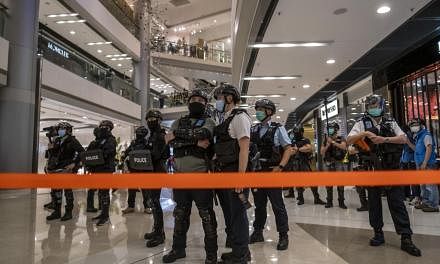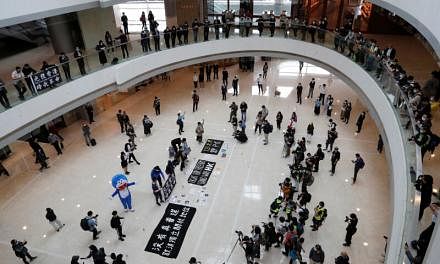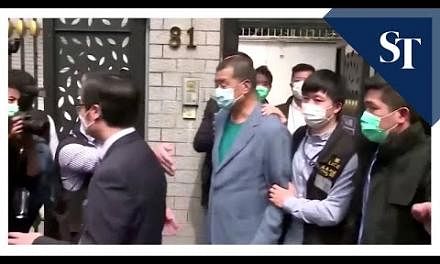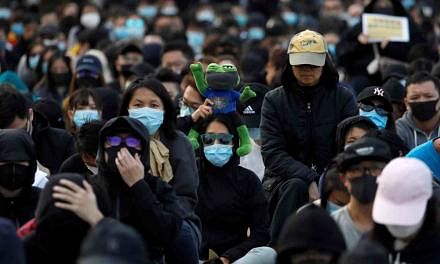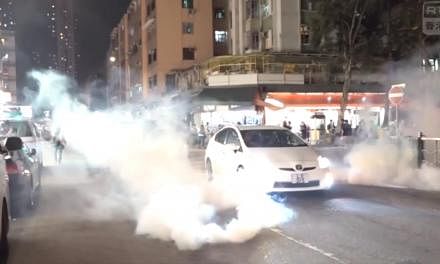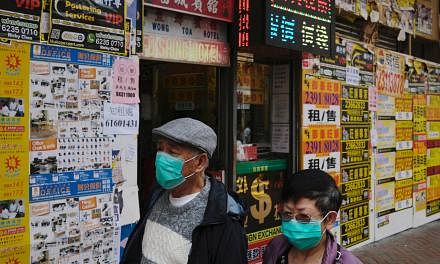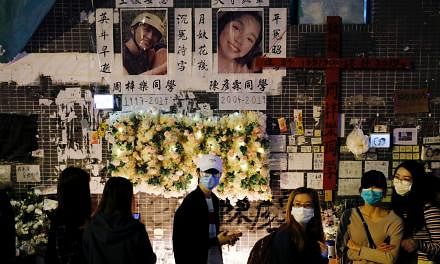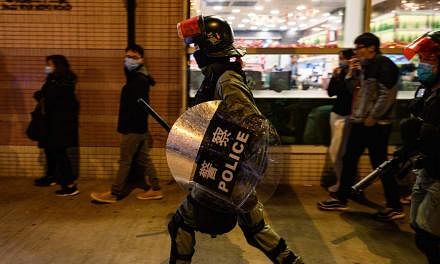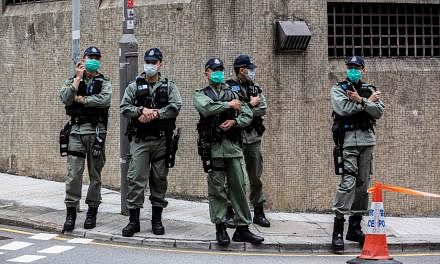HONG KONG (NYTIMES) - The 30,000-member Hong Kong police force was long known as "Asia's finest". Then with the world watching, they tear-gassed and beat largely peaceful demonstrators and fired rubber bullets at them. Some officers appeared to hide their badges to avoid identification.
Now the force is struggling to salvage a reputation blighted by its behaviour in the June 12 protests over a proposed extradition law that convulsed Hong Kong, the semi-autonomous Chinese territory.
Faced with public fury over their crowd-control tactics, police retreated and watched as thousands of young demonstrators besieged their headquarters for 15 hours last week, barricading the exits, throwing eggs and spraying graffiti on the walls.
Officers ducked their heads as protesters aimed laser pointers at them, and a police spokesman who urged the demonstrators to leave was drowned out by jeering.
"Dirty cops are becoming like dogs," read a large banner that protesters unfurled in front of police headquarters last Friday.
"They're learning to be the People's Liberation Army," it continued, referring to the military that serves China's governing Communist Party.
Senior government and police officials have defended the department's performance, saying that it is apolitical and merely upholding the rule of law.
But pro-democracy opposition leaders have increasingly targeted the police force, accusing it of defending a government that in their view is subverting the same rule of law it claims to uphold. They are seeking to turn the police into a potent symbol of how Hong Kong authorities are accountable not to the public, but Beijing.
At first, the protesters focused their ire on the contentious Bill that would allow extraditions to mainland China - and their huge demonstrations forced the city's leader to suspend the legislation indefinitely. But many protesters, particularly students and people in their 20s, have in recent days directed their anger at the police's conduct during clashes on June 12.
That day, police were responsible for maintaining order and securing access to government buildings during a huge rally. But when some protesters hurled bricks and tried to storm the grounds of the legislature, officers fired tear gas on crowds that had few places to flee to and used rubber bullets for the first time in decades. Dozens were injured.
Videos circulating online of the clashes prompted many members of the public and human rights groups to criticise the police response as excessive and the arrests as capricious. They also noted that some riot police officers did not wear badges during the episode, perhaps to evade prosecution.
Now, front-line officers routinely face verbal abuse and profanity at protests, an unusual phenomenon for members of a body that had long been highly respected.
Critics of the police's conduct have created open-source databases in which users share officers' phone numbers and the names of their spouses and high schools on social media, with some lists referring to the police as dogs.
Lam Chi-wai, chairman of the Junior Police Officers' Association, a police union, said the personal data of more than 400 officers and their families had been posted online, including his own.
"This is immoral," he said. "There are people saying that bloodshed is needed to repay bloodshed, a tooth for a tooth. I'm shocked and saddened by this."
Public anger against the police's tactics swelled after the Police Commissioner Stephen Lo and the city's Chief Executive Carrie Lam described the June 12 demonstration as a riot, which suggested serious potential legal ramifications for participants.
When nearly two million Hong Kong residents, by the organisers' count, marched on June 16 against the extradition Bill, many also demanded that the authorities rescind the riot label.
That rally prompted Lo to backtrack on calling the protest a riot, saying that anyone who demonstrated peacefully then should not worry about prosecution on rioting charges.
But that was not enough to quell anger against the police force, and protests continued. Police have since kept the riot gear aside and tried to negotiate with protesters, even when they swarmed police headquarters last Friday, posing what Lo described in an internal memo this weekend as a "major challenge".
Some experts say the rift is inevitable in the former British colony where the police force has substantial paramilitary training. Britain built up the Hong Kong police in the 1960s to help control pro-communist riots, experts said.
The police force was plagued by corruption in the 1960s and 70s, but an anti-corruption drive helped improve the force's image by the 1980s. After Britain handed the territory over to China in 1997, Hong Kong was relatively peaceful for the first decade; and even a mass protest against Beijing-backed national security legislation in 2003 went smoothly.
But cracks began to show during pro-democracy protests in the territory in 2014 known as the Umbrella Movement, analysts and police officers said in interviews. At the time, the use of force against protesters, including pepper spray and tear gas in the early days of the standoff, set off larger demonstrations.
"Umbrella was a watershed," said Gary Fong, a criminal justice expert at the Chinese University of Hong Kong. The public "never thought the police would use tear gas to disperse peaceful protesters or students".
Seven police officers were convicted of assault for beating a protester during the 2014 demonstrations. Some observers say this month's heavy-handed police response to protests was motivated in part by lingering grievances within the force over those convictions.
In interviews, police officers and their supporters expressed frustration that Hong Kong officials and the local media, as they see it, underplayed the violence on the part of the protesters.
"Even when the entire society is dissatisfied with the government, the police has no choice" but to maintain order, said Lam Chi-wai, the police union chairman. "For this we are often seen as a key part of the government, and so we are attacked."
They also said that by appearing to backtrack on calling the incident a riot, Lo, the police chief, essentially shifted the blame from the force as a whole to individual officers.
"What the front-line officers did was to arrest people who participated in a riot - and now you say not everyone is a rioter?" a police officer said in an interview, referring to Lo, and speaking on condition of anonymity to avoid reprisal. "People start to blame the officers, and it hurts their morale."
Lawrence Ho, an expert on policing and criminal justice at the Education University of Hong Kong, said he was sympathetic toward the officers who had not acted with excessive force. "They actually are scapegoats of political arguments," he said.
Andrea Tam, an accountant who supported the police in a rally downtown last Saturday, said the riot officers had done the right thing during the clashes with protesters.
"This is a civilised society," Tam said. "We don't tolerate uncivilised behavior."
Last week, police and a watchdog that monitors complaints against them, and whose members are appointed by the Chief Executive, both said they would investigate the tactics used against the protesters. But many protesters and pro-democratic lawmakers have called for a fully independent inquiry.
James To, a pro-democracy lawmaker and the vice-chairman of the legislature's security panel, predicted that any prosecution of police officers would not come for at least nine months.
For many angry protesters, he said, "that will be too late".

